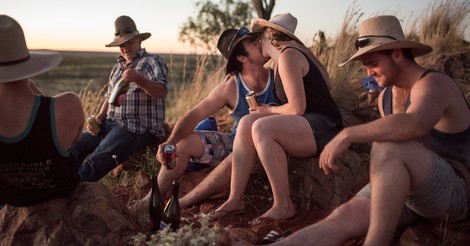Your podcast discovery platform
Curious minds select the most fascinating podcasts from around the world. Discover hand-piqd audio recommendations on your favorite topics.

piqer for: Globalization and politics Global finds
I am an Australian freelance journalist focussing on conflicts, politics, and warzones around the world. I have been working as a journalist for over 5 years, having reported from Australia, Germany, China, Egypt, Palestine, and Ukraine. I am especially interested in the way that new technologies are being used in conflict zones in unexpected and often disturbing ways. During my time working as a journalist, I also co-founded open-source war reporting site Conflict News.
Through The Outback
Modern Australia is in many ways not all that different from anywhere else in the so-called 'West'. It is highly urbanized, increasingly developed and comparatively rich. With this in mind, even as an Australian, you tend to forget there is, in fact, another Australia — one that resonates more with a slower lifestyle from eras gone by.
I speak of course of the Outback — the vast swathes of deserts and plains that make up the majority of Australia's landmass. Unlike the rest of the country, which is marching into an international future, the Outback instead has its feet firmly planted both in the past and also in the red soil of the land.
But in even the places other Australians like to view as 'the middle of nowhere', change is still an ever-present force. Huge mining operations are taking the place of traditional pastoral industries, creating a random smattering of boom-towns, while the rest go bust. As well, climate change and drought are making agriculture less and less economical for those who still work the land. Still, in spite of all of this, a few hundred thousand people continue to cling on as the sand shifts beneath their feet.
Writing for The New York Times, Adam Ferguson presents a truly amazing piece of journalism, not just chronicling the big changes going on in the Outback, but also taking an intimate and detailed look at the lives of some of its more colorful inhabitants. Alongside this are the vivid photographs he took, contrasting the natural beauty and emptiness of the region, with the ruggedness of the people who still live there.
While I would have liked him to go more in-depth into the social and historical problems related to Australia's Indigenous people (who make a significant fraction of the Outback's inhabitants), this piece is still a great insight into an anomalous part of one of the world's most developed countries.
